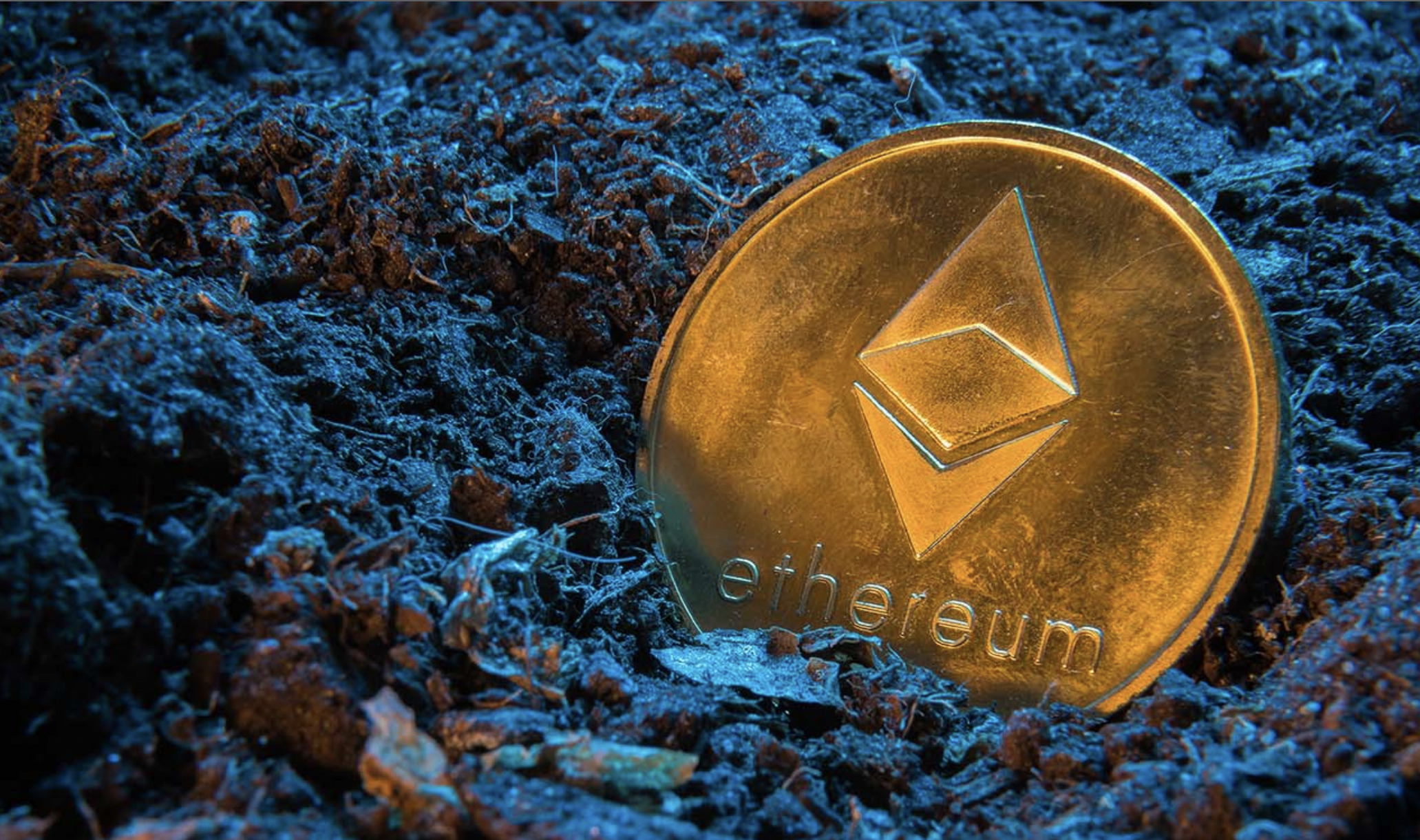
Google Trend data revealed that the searches for the term “Ethereum Merge” exploded at least five months before the actual event. The transfer of the Ethereum Mainnet from Proof of Work (PoW) to Proof of Stake (PoS), dubbed “The Merge,” is arguably one of the most anticipated events in the cryptoverse and the world wide web at large.
The Merge was successfully executed on September 15, 2022, moving the digital machinery at the core of the second-largest cryptocurrency by market value to a widely more energy-efficient system after years of development and delay. This completed Ethereum’s transition to Proof-of-Stake consensus, reducing energy consumption by 99.95%.
Ethereum’s developers believe that the upgrade will make the network, which houses a $60 billion ecosystem of cryptocurrency exchanges, lending companies, non-fungible token (NFT) marketplaces, and other apps, even more secure and scalable. Miners are no longer responsible for verifying transactions and adding them to the blockchain.
Sponsored
That being said, we’ll walk you through what the Merge is, why it is important to the future of Ethereum, and misconceptions about the Merge, among other things.
First Off, What Exactly Is The Merge?

Simply defined, “the Merge” is the term coined by Ethereum developers to describe the merger of its existing mainnet, which employs Proof of Work (PoW), and a separate Proof of Stake (PoS) blockchain known as the Beacon Chain, both (i.e Eth 1 and Eth 2) of which now coexist as a single chain.
According to the Ethereum Foundation, “The Merge” represents the joining of the existing execution layer of Ethereum (the mainnet we use today) with its new Proof-of-Stake consensus layer, the Beacon Chain.
Sponsored
To be clear, PoW is the legacy consensus mechanism deployed by the earliest Layer 1 (L1) blockchain networks, such as Bitcoin. This is also the same fundamental consensus algorithm that has been used to secure the Ethereum network until recently, when it integrated PoS into the existing mainnet, ensuring improved scalability because it is more energy efficient than the legacy alternative.
Interestingly, the foregoing contradicts speculation that Ethereum might completely abandon PoW, which is thought to provide more security than PoS. Well, the exception is that it will no longer require the input of the numerous miners who will now be left with nothing to mine.
While The Merge is expected to be executed in two stages – Bellatrix and Paris – the former has been successfully implemented, with the latter anticipated to happen soon. So far, the deployment of the Bellatrix stage has had no significant implications, except that the value of Ethereum’s native asset, Ether, has yet to recover from the substantial decrease it suffered following the upgrade.
For instance, after soaring to around $1,650 before the upgrade, Ether (ETH) has subsequently struggled to go past $1,300; yet, many have argued that the upgrade had nothing to do with the price, even though this appears to be the case.
Besides, the update, which ends the network’s reliance on the energy-intensive process of cryptocurrency mining, has been tightly followed by a lot of skepticism for the impact it is expected to have on the wider blockchain industry.
Notably, Ethereum’s co-founder, Vitalik Buterin, described The Merge as a “big moment” for the Ethereum ecosystem, but during a viewing party, he warned that the hard work begins now.
Striking a cautious note, Ethereum’s co-founder said: “There are still lots of steps to go. We still have to scale; we still have to fix privacy; we have to make the thing actually secure for regular users. We have to work hard and do our part to make all of these other things happen as well.” Buterin added that The Merge symbolizes the difference between early-stage Ethereum and the Ethereum they have always wanted.
Understanding Proof of Stake (PoS)
Proof-of-Stake (PoS) protocols are a class of consensus mechanisms for blockchains that work by selecting validators in proportion to their quantity of holdings in the associated cryptocurrency.
Ethereum uses proof-of-stake, where validators explicitly stake capital in the form of ETH into a smart contract on Ethereum. This staked ETH then acts as collateral that can be destroyed if the validator behaves dishonestly or lazily. The validator is then responsible for checking that new blocks propagated over the network are valid and occasionally creating and propagating new blocks themselves.
In addition, Proof of Stake offers a lot of improvements to the Proof of Work system, such as better energy efficiency, lower barriers to entry, reduced hardware requirements, and reduced centralization risk. Notably, economic penalties for misbehavior on PoS make 51% of style attacks exponentially more costly for an attacker than PoW.
Why the Switch to Proof of Stake?
Proof of Stake (PoS) and Proof of Work (PoW) are consensus mechanisms that, in different ways, help ensure users are honest with transactions by incentivizing good actors and making it extremely difficult and expensive for bad actors. However, there are three major reasons Ethereum switched from a PoW system to a PoS system:
1. More Secure, Decentralized Network
Due to the high mining cost, very few participants can validate independently, while most individuals interested in mining activities join mining pools. Accordingly, mining pools build and propose most of the blocks, suggesting that a highly centralized few control the network.
However, with the integration of PoS, Ethereum now requires a minimum of 16,384 validators, making the network much more decentralized and secure. Ethereum co-founder, Vitalik Buterin, posited that more validators and staked Ethereum means increased security on the network.
2. Scalability Through Sharding
Besides optimizing energy consumption, the Merge also introduces “sharding,” a process generally known to significantly reduce network congestion while increasing the speed of validation and transactions.
In this case, the network transition from PoW to PoS is the first step to enabling sharding, an effort to divide the network into shard chains that share the load of Ethereum, theoretically reducing network congestion and increasing transaction throughput. Rather than settling all operations on one single blockchain, these shard chains spread operations across 64 new chains.
Sharding is planned to begin in 2023 and should enable significant progress in scalability for the network. After its implementation, sharding will increase Ethereum’s transaction throughput to 100,000 transactions per second, a considerably higher throughput than all leading credit card companies.
3. More Efficiency and Use of 99% Less Energy Than PoW
The main difference between PoW and PoS is that PoW requires massive amounts of energy, necessitating that miners sell their coins to foot the bill. PoS, on the other hand, is actually more efficient, using 99% less energy than PoW.
Unlike in the past, when hundreds of validators competed to validate a transaction block, the new consensus mechanism randomly chooses one of several validators who must have already staked a required portion of the network’s native asset (i.e. ETH).
The idea behind the reduced energy consumption is that by randomly selecting a validating node to validate a transaction, Ethereum can minimize the computational resources (such as hardware mining rigs) required for validating a transaction, which further translates to significantly reduced energy consumption.
Furthermore, according to the Ethereum upgrade guide on energy consumption, the switch to Proof of Stake implies the Ethereum network expends relatively little energy, on the order of 0.01 TWh/yr.
There are two benefits to Ethereum’s reduced energy consumption. First, the Ethereum blockchain will become drastically more ecofriendly. Second, a substantial cost associated with operating the blockchain (paying for electricity) will be mostly eliminated.
What Next After the Merge?

The Merge is actually the first stage of five from the Ethereum protocol’s upcoming development. The five stages include:
The Merge: This is the first stage of the upgrade, which happened last month. The upgrade entailed the transition from Proof of Work to Proof of Stake following the merge of Ethereum’s current manner with the Beacon Chain.
The Surge: This phase will bring sharding to the protocol. It’s a scaling solution that will break the network into separate partitions called “shards,” designed to spread the computational load on the mainnet.
The Verge: This phase introduces the so-called “verkle trees.” It involves an upgrade to Merkle proofs and is intended to optimize data storage for Ethereum nodes.
The Purge: This phase also concerns data storage for validators, and will reduce the hard drive space required for them, streamlining network congestion.
The Splurge: This is the last upgrade in the pipeline and is intended to deliver a string of miscellaneous updates that are made to ensure the overall smoothness of how the network runs.
Common Misconceptions About Ethereum’s Latest Upgrade
Before any big update in the crypto space, there’s bound to be some chatter, which might not be true. In the case of the Ethereum Merge, there are some untrue statements you should know about.
1. Transaction Speed Will Increase: There will only be some slight changes, as the mainnet network will likely not be different from how it used to be.
2. Gas Fees Will Drop After The Merge: It has been confirmed that the Merge will change the overall consensus algorithm and will not expand the network capacity. Hence, it won’t result in lower gas fees as it wasn’t intended to do so.
3. Running a Node Requires Staking 32 ETH: Double false. According to Ethereum’s official website, anyone is free to sync their own self-verified copy of Ethereum (i.e. run a node). No ETH is required: not before The Merge, not after The Merge, and not ever.
4. Faster Withdrawal of Staked ETH: If you are interested in helping scale up the Ethereum network following the Merge, you’ll need to be in it all the way. Why? According to Ethereum’s official website, staked ETH will be locked until the planned Shanghai update sometime in 2023. But it doesn’t end there. After the Merge, all staking rewards and newly issued ETH will remain locked on the Beacon chain.
Why You Should Care
The Merge is arguably one of the biggest advancements in the crypto industry and is a work in progress, much like the entire Ethereum network.
Particularly, the switch from Proof of Work to Proof of Stake has been a daunting journey, but with great progress along the line. There will surely be challenges, but measures are in place to ensure the network is safe from attacks. The Merge promises a new era for the second-largest cryptocurrency, paving the way for major upgrades to the network.
Find out more on Vitalik Buterin’s book launch:
Vitalik Buterin Announces Launch of His “Proof-of-Stake” Book Ahead of the Merge
Read more on the effect of the merge on Ethereum’s native token:
What Will Happen to Your ETH after the Merge?
